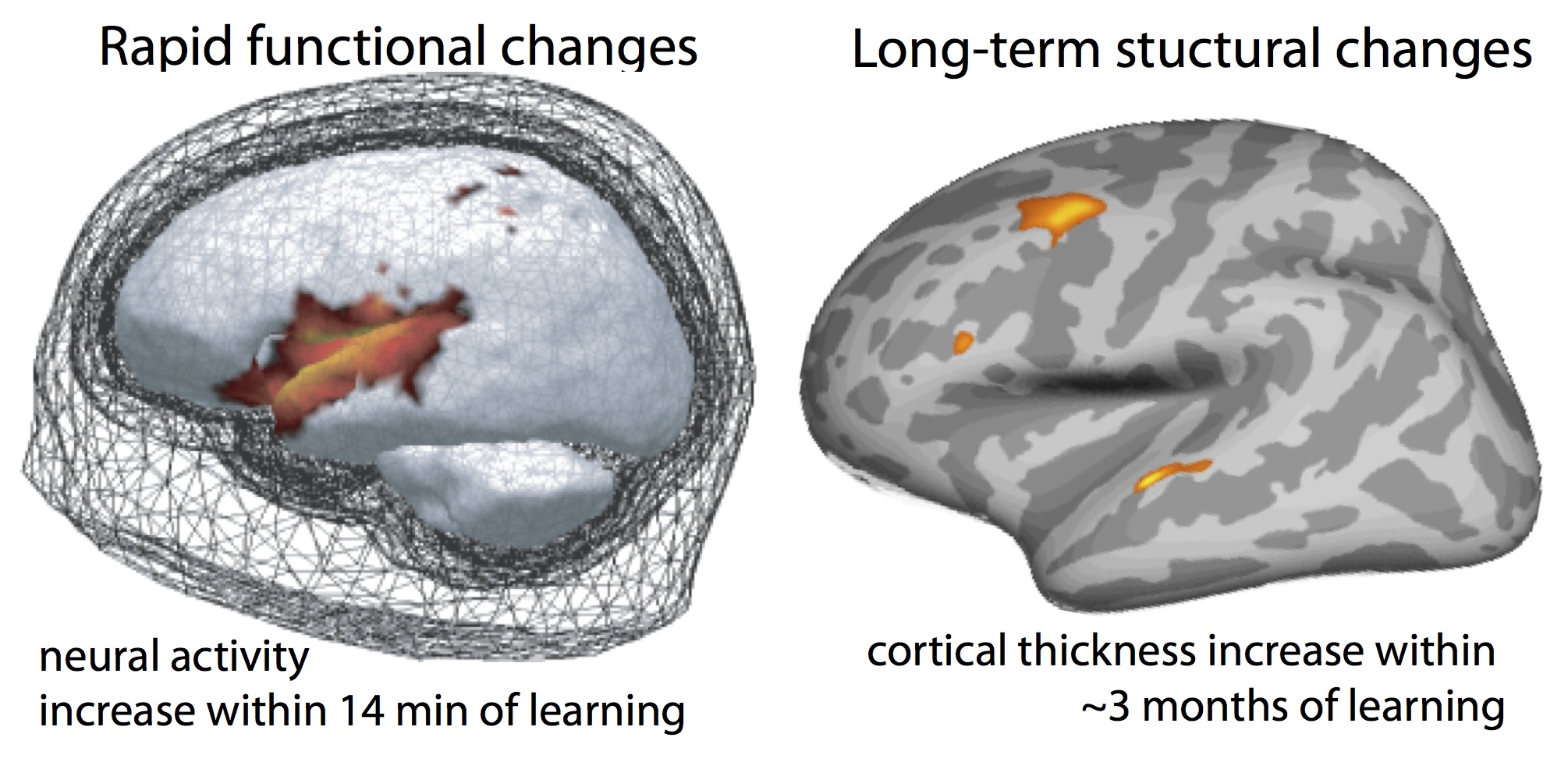Microstructures of Learning: Novel methods and approaches for assessing structural and functional changes underlying knowledge acquisition in the brain

The HuMeNS(Humanities, Medicine, Natural science, Social sciences) Advanced Study Group at Pufendorf Institute , Lund University is conducting an interdisciplinary research program involving collaboration between linguists, neuroscientists, physical chemists, and MR-physicists with the aim of developing new imaging methods that will make it possible to understand what changes take place on a cellular level in the brain during language acquisition.
The Pufendorf Institute and the HuMeNS-group invite you to an international symposium on Microstructures of Learning: Novel methods and approaches for assessing structural and functional changes underlying knowledge acquisition in the brain.
May 23, 2014
Piratensalen, Grand Hotel, Bantorget 1, LundHow to get to Lund
Yaniv Assaf, Dept. of Neurobiology, Tel Aviv University, "Learning in the fast-lane: New insights into neuroplasticity from micro-strcutural MRI"
Ruth de Diego Balaguer, Cognition and Brain Plasticity Group,University of Barcelona, "Brain structural and functional differences associated to language learning abilities"
Derek Jones, School of Psychology, Cardiff University, "Tractometry and the search for the missing link"
Teija Kujala, Cicero Learning, University of Helsinki, and Institute of Behavorial Science, University of Helsinki,"Plasticity of early neural language processes"
- Johan Mårtensson, Dept. of Psychology, Lund University, "Proficiency and brain structure during intense language learning"
- Markus Nilsson, Lund University BioImaging Center, "Quantification of diffusional anisotropy in regions of complex tissue microstructure using non-conventional diffusion MRI"
- Mikael Roll, Dept. of Linguistics, SOL-Center, Lund University, "ERP—exploring the temporal microstructure of cognitive functions in the brain"
- Yury Shtyrov, CFIN, Århus University, "Electrophysiological and haemodynamic biomarkers of rapid acquisition of novel wordforms"
- Daniel Topgaard, Dept. of Chemistry, Lund University "Multidimensional diffusion MRI: From colloid science to learning studies"
9.15-9.45: Registration/Coffee
9.45-10.00: Welcoming remarks
10.00-11.00: Ruth de Diego Balaguer: Cognition and Brain Plasticity Group, University of Barcelona, "Brain structural and functional differences associated to language learning abilities"
11.00-11.30: Johan Mårtensson: Dept. of Psychology, Lund University, "Proficiency and brain structure during intense language learning"
11.30-12.00: Mikael Roll: Dept. of Linguistics, SOL-Center, Lund University, "ERP—exploring the temporal microstructure of cognitive functions in the brain"
12.00-13.00: Lunch
13.00-14.00: Derek Jones: School of Psychology, Cardiff University, "Tractometry and the search for the missing link"
14.00-14.30: Daniel Topgaard: Dept. of Chemistry, Lund University "Multidimensional diffusion MRI: From colloid science to learning studies"
14.30-15.00: Coffee
15.00-16.00: Teija Kujala: Cicero Learning, University of Helsinki, and Institute of Behavorial Science, University of Helsinki, "Plasticity of early neural language processes"
16.00-16.30: Yury Shtyrov: CFIN, Århus University, "Electrophysiological and haemodynamic biomarkers of rapid acquisition of novel wordforms"
16.30-17.00: Markus Nilsson: Lund University BioImaging Center, "Quantification of diffusional anisotropy in regions of complex tissue microstructure using non-conventional diffusion MRI"
17.00-17.15: BREAK
17.15-18.15: Yaniv Assaf: Dept. of Neurobiology, Tel Aviv University, "Learning in the fast-lane: New insights into neuroplasticity from micro-structural MRI"
18.15-18.45: Discussion and Closing Remarks
Participation is free of charge. Please contact the organisers at microl-2014ling.luse if you are interested in attending the symposium.
The symposium constitutes the major event organized by the HuMeNS Advanced Study Group funded by the Pufendorf Institute , Lund University.
The symposium has also received financial support from the Birgit Rausing Language Program.

Merle Horne (Linguistics), Magnus Lindgren (Psychology), Markus Nilsson (Lund University BioImaging Center), Mikael Roll (Linguistics), Yury Shtyrov (CFIN, Århus University), Freddy Ståhlberg (Lund University BioImaging Center), Daniel Topgaard (Physical Chemistry), TESLA (Lund Univ.)
